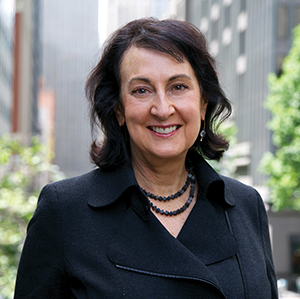The Future of Sustainability: Eclipsing the Building?
By Beverly Prior
On Aug. 23, I was part of the exodus from St. Louis, leaving the American Correctional Association’s (ACA) summer conference along with so many others who descended here for the powerful experience of being in the path of the Great American Eclipse. Who knew when this year’s ACA location was picked that we would be within 30 miles of totality? And how smart of Corizon Health to have eclipse glasses as their vendor giveaway?

It was a rare and powerful phenomenon, so it’s only natural that it would influence my reflections this year on the state of sustainability in corrections. My musings today are generated from conversations at this ACA congress, ones that offer an opportunity to question how we think of sustainability in light of emerging trends. Let’s take a look at current topics that in the long term could eclipse the building as a driver of sustainability.
Community-based Solutions
While correctional and detention facilities will always have a role in our society, what if we step back and rethink our approach to dealing with offenders? Martin Horn, the distinguished lecturer in corrections at the John Jay College, City University of New York was honored at ACA with the Maud Booth Correctional Services Volunteers of America award. In his acceptance speech, he challenged us to look at our current practices of incarceration and ask ourselves if this kind of supervision of offenders is what is needed to achieve rehabilitation and make society safer. His vision goes beyond the facility in suggesting that the solution to recidivism is for offenders to 1. Be drug-free, 2. Have a home and 3. Have a job — all three at the same time. Can our communities be more sustainable with solutions outside of the facility?
Technology
While advances in technology may create new challenges, there is no question that technology offers solutions that formerly could only be achieved through building space and hardwiring. For example, televisions in dayrooms traditionally generated challenges in operations, noise, space requirements and maintenance. Now through earphones that can be tuned into a particular television or a handheld device, noise is virtually eliminated. Individual handheld devices have minimal space impact and can also exponentially provide educational, entertainment, video visitation, medical, commissary and other inmate services in the native language of the inmate. Our facilities can be more efficient and less expensive — more sustainable — with the use of technology.
Metrics & Model Facilities
The Sustainable Justice Committee (SJC) of the AIA’s Academy of Architecture for Justice (AAJ) developed guidelines for sustainable justice that illustrate the interdependence of the building with society, community and humans. At ACA this summer, Erica Loynd of DLR Group, Bob Schwartz of HOK and I joined Retired Lieutenant Dave Titus of San Mateo County to present detention and corrections facilities from around the country that are exemplary in supporting sustainability that goes beyond the building. Core questions are how the building supports the local justice system from a preventative, treatment and re-entry perspective and how, from a human perspective, the building supports rehabilitation, learning, destressing, de-escalating and feeling of wellness for inmates and for staff.
Following are examples of some sustainable justice guidelines, the metrics and model facilities reflected in community, building and human elements.
Community Scale: Planning Process
Goal: Stakeholder and community involvement.
Metric: Community meetings/interaction including justice system stakeholders and community groups.
Target: Changes are made based on feedback received.
Model Facility: San Mateo County Maple Street Correctional Facility in California. The sheriff’s department’s process included extensive community meetings, which led to negotiation for an alternative site. Line staff and service providers participated in envisioning a groundbreaking, innovative facility.
Facility Scale: Outdoor Space for Inmates
Goal: Outdoor space meets stress reduction and health maintenance needs of all inmates.
Metric: Access, size and quality of spaces.
Target: One-hundred percent of wards have access to varied recreational equipment, quiet space, and a mix of open and rain/sun-shielded areas.
Model Facility: Oregon Youth Authority, MacLaren Campus. Robust outdoor programs supplement the rehabilitation program. Counselors can often achieve breakthroughs in their connections with the youth in the informal setting of outdoor activities.
Human Scale: Stress Reduction
Goal: Sunlight, daylight and views that cue time of day, weather conditions and psychological connection to nature.
Metric: Natural light is introduced to sleeping and dayroom areas and other areas should have daylight and/or views of nature.
Target: A view is available for 90 percent of regularly occupied areas; simulated views are provided in areas views cannot be provided.
Model Project: Iowa State Penitentiary. It provides generously sized windows that bring sunlight into the housing units and views out.
Human Scale: Normative Environment
Goal: Durable, safe, non-institutional environment to cue pro-social behavior.
Metric: Finishes, colors and patterns selection.
Target: Use varied colors, wall and ceiling treatments, and furniture that is similar to a university or hospital.
Model Project: San Diego County Las Colinas Women’s Detention Facility. To create a normative environment, the majority of the inmates go to a dining center for meals. Colors are bright, furnishings are like those in a university setting creating an uplifting environment that cues pro-social behavior.
To read the entire article, check out the September/October issue of Correctional News.
Beverly Prior, FAIA, LEED AP, is vice president for AECOM, based in the company’s San Francisco office.

